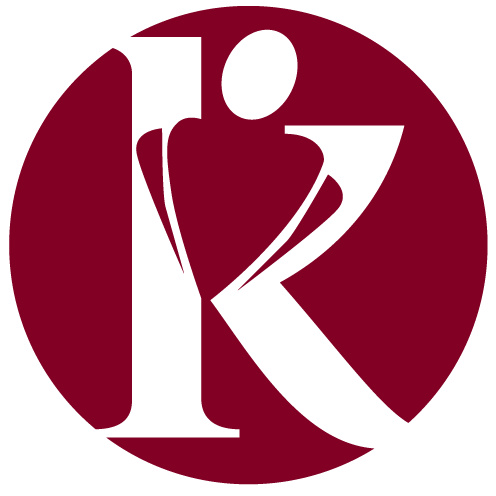
The Schedule A Visa is a specialized immigration pathway designed to ease the entry of specific skilled professionals into the United States, notably nurses and physical therapists. This visa accelerates the route to permanent residency by waiving the standard labor certification process, which can be both lengthy and complex.
Given the growing demand for qualified professionals in healthcare, the Schedule A Visa is essential within the U.S. immigration framework. By enabling skilled workers to bypass traditional hurdles, it not only offers individuals promising career opportunities but also addresses labor shortages in critical sectors, bolstering the U.S. workforce and economy.
What is the Schedule A Visa?
The Schedule A Visa is a specialized immigration route allowing qualified foreign professionals to enter the United States without undergoing the standard labor certification process. This visa category, targeted at high-demand roles like registered nurses and physical therapists, simplifies the application process. As a result, eligible professionals can bring their skills and expertise to the U.S. workforce more swiftly, helping to meet critical labor needs in essential sectors.
Purpose and Benefits of the Schedule A Visa
The primary purpose of the Schedule A Visa is to address the pressing need for skilled labor in specific sectors, particularly in healthcare. By facilitating the entry of qualified professionals, the U.S. can better meet the growing demands of its population and enhance the quality of care provided in medical facilities.
The benefits of the Schedule A Visa include:
- Labor Certification Exemption: Applicants do not need to undergo the often-time-consuming labor certification process, allowing for a faster application timeline.
- Pathway to Permanent Residency: Successful Schedule A Visa holders can apply for permanent residency (Green Card), providing them with long-term stability and opportunities in the U.S.
- Addressing Workforce Shortages: This visa helps to fill critical job vacancies, particularly in healthcare, ensuring that U.S. citizens have access to essential services.
- Opportunities for Skilled Workers: It opens the door for qualified professionals from around the world to seek employment and build their lives in the United States, enriching the nation’s cultural and professional landscape.
Eligibility Criteria for the Schedule A Visa
The Schedule A Visa is tailored for foreign workers in specific occupations that are in high demand within the United States. To be eligible for this visa, applicants must meet certain qualifications related to their profession, education, and experience. To qualify for the Schedule A Visa, applicants must meet specific requirements, including:
- Types of Occupations: The Schedule A Visa primarily focuses on occupations within the healthcare sector. Key eligible professions include:
- Registered Nurses (RNs): Individuals must hold a nursing degree and be eligible for licensure in the state of intended employment.
- Physical Therapists (PTs): Applicants must have a relevant degree and meet state licensing requirements.
Other skilled professions may also qualify under Schedule A, but nursing and physical therapy are the most common categories.
Educational Requirements: Applicants must possess a minimum educational qualification relevant to their occupation:
- For Registered Nurses, a nursing degree, such as an Associate Degree in Nursing (ADN) or a Bachelor of Science in Nursing (BSN), is required.
- For Physical Therapists, a Doctor of Physical Therapy (DPT) degree is necessary.
- Other Professions: Educational requirements vary by occupation and industry standards.
- Experience and Licensing: Candidates must demonstrate relevant work experience in their field, including clinical practice or internships, and hold any necessary licenses or certifications required to practice in their profession in the state where they plan to work.
- Job Offer: Applicants must have a confirmed job offer from a U.S. employer who will sponsor their visa application, ensuring they have employment lined up upon entering the United States.

Application Process for the Schedule A Visa
Applying for a Schedule A Visa involves several key steps:
- Determine Eligibility: Ensure you meet the occupational and educational requirements.
- Gather Required Documentation: Prepare necessary documents, including proof of education, licensure, and any relevant work experience.
- Complete Application Forms: Fill out the appropriate forms, such as Form I-140 (Immigrant Petition for Alien Worker) and any supporting documentation.
- Submit Application: File your application with U.S. Citizenship and Immigration Services (USCIS) and pay the required fees.
- Processing Timeline: Processing times can vary, but applicants can expect a response from USCIS within few months.
Labor Certification Exemptions
- Exemption from Labor Certification: One of the significant advantages of the Schedule A Visa is that applicants are exempt from the labor certification process. Typically, this process involves proving that no qualified U.S. workers are available for the job, which can be time-consuming and complex.
- Faster Processing Times: This exemption allows for a more streamlined application process, meaning that qualified professionals can expect quicker decisions on their applications, facilitating a smoother transition into their new roles.
- Addressing Labor Shortages: By attracting qualified nurses and physical therapists, the Schedule A Visa plays a vital role in addressing critical shortages in the healthcare workforce, ensuring that essential services are maintained and that patients receive timely care.
Advantages of Schedule A Visa
- Fast-Tracking the Application Process: The Schedule A Visa significantly reduces processing times compared to standard employment-based visas, enabling quicker access to permanent residency.
- Access to Permanent Residency: Successful applicants gain the opportunity to become lawful permanent residents, allowing them to live and work in the U.S. indefinitely.
- Labor Certification Exemption: Certain professions under Schedule A are exempt from the labor certification requirement, simplifying the application process for eligible candidates.
- Increased Job Opportunities: The visa opens doors for qualified individuals in high-demand occupations, such as nursing and physical therapy, which are crucial in the U.S. workforce.
- Stability for Families: Permanent residency allows for family reunification, providing stability and security for applicants and their loved ones.
Common Challenges and Considerations for Schedule A Visa Applicants
While the Schedule A Visa presents several advantages, applicants should be aware of potential challenges:
- Documentation Requirements: Gathering and submitting all necessary documents can be a complex task. Ensuring that each document is complete and accurate is crucial to avoid delays or rejections.
- Understanding the Application Process: The application process can be intricate, and applicants may find it challenging to navigate the various steps. Careful attention to detail is essential to ensure compliance with all requirements.
- Potential for Delays: Despite the expedited processing times, external factors such as administrative backlogs may still cause unexpected delays in the approval process.
- Changing Immigration Regulations: Immigration laws and policies can evolve, impacting eligibility and the application procedure. Staying informed about current regulations is vital for applicants.
- Financial Implications: The costs associated with application fees, legal assistance, and document preparation can add up. It’s important for applicants to budget accordingly to cover these expenses.
Tips for Overcoming Challenges
To successfully navigate the Schedule A Visa process, consider the following strategies:
- Gather Comprehensive Documentation: Ensure that all required documents are complete and correctly formatted. This includes proof of education, relevant licenses, and work experience.
- Consult with Experts: Work with an immigration attorney who can help you navigate the complexities of the application process and provide advice on best practices.
- Stay Updated on Regulations: Regularly review changes in immigration laws and procedures to ensure compliance and avoid surprises that could delay your application.
- Prepare for Potential Delays: Be proactive in managing expectations regarding processing times and stay in communication with USCIS if you experience delays.
Conclusion
The Schedule A Visa represents a valuable opportunity for skilled workers, particularly nurses and physical therapists, to achieve permanent residency in the United States. By understanding the eligibility criteria, application process, and potential challenges, eligible candidates can make informed decisions about pursuing this pathway. The Schedule A Visa offers a significant opportunity for qualified professionals, especially nurses and physical therapists, to attain permanent residency in the United States. By familiarizing themselves with the eligibility requirements, application procedures, and common challenges associated with this visa category, eligible candidates can navigate the process more effectively. This proactive approach empowers applicants to make informed decisions and enhances their chances of successfully securing a visa that allows them to contribute their skills to the U.S. healthcare system while enjoying the benefits of lawful permanent residency.
Kodem Law guides skilled workers through the Schedule A Visa process, offering expert support on eligibility, application steps, and overcoming challenges to help secure permanent residency efficiently.
Frequently Asked Questions
Q- What types of occupations are eligible for the Schedule A Visa?
The Schedule A Visa primarily includes occupations such as registered nurses and licensed physical therapists. These professions benefit from streamlined processing due to the high demand for their skills in the U.S. labor market.
Q- How does the application process for the Schedule A Visa differ from other employment-based visas?
The Schedule A Visa allows for labor certification exemptions, which simplifies the application process compared to standard employment-based visas. Applicants can file Form I-140 directly without needing to obtain a labor certification from the Department of Labor, leading to faster processing times.
Q- What documentation is required to apply for a Schedule A Visa?
Applicants must provide several key documents, including proof of education (such as degrees and transcripts), relevant work experience (like resumes or letters from previous employers), and any necessary licenses or certifications required for their profession in the state where they plan to work.
If you have any questions or need further clarification about the Schedule A Visa, please feel free to comment below. We’re here to help!

